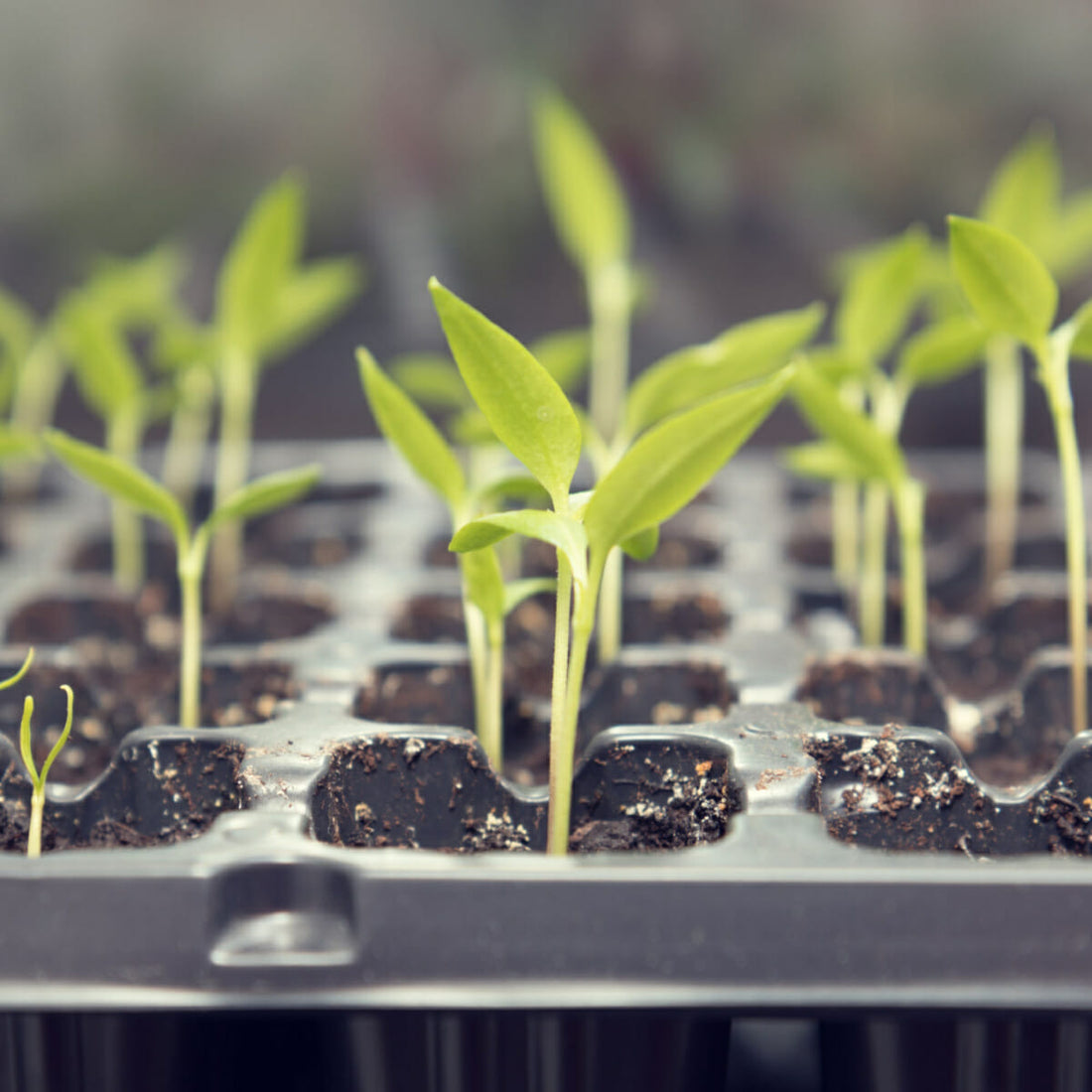Starting your seeds indoors gives you a head start on Spring, but since no plant on earth is actually an “indoor plant,” you’ll need to overcome a few common problems with indoor seed starting. Luckily, they’re pretty predictable and you can preempt some of the issues that regularly occur. Let’s pinpoint what these common issues are and look for solutions to boost your gardening success.
It’s Not Warm Enough
There are two factors to look at here: soil temperatures and air temperatures. Soil temperatures must be right for your seeds to germinate. For example, tomato seeds need a soil temperature that’s higher than 18 degrees to start growth. Bottom heat supplied by heating pads is the best solution. But if you want to DIY this, try using a hot water bottle under your germination trays and water them with warm water.
Air temperatures are important too. As a rule of thumb, your summer crops generally like the same air temperatures you do. For tomatoes, 10 degrees is the minimum, and higher is better. If you’re growing your seedlings indoors, your air temperature will probably be OK, but if you choose a veranda, temperatures may drop a little too low for your seedlings to be comfortable.
To measure air temperatures, consider buying an inexpensive minimum and maximum thermometer. The mercury leaves a marker behind to show you what the lowest and highest temperatures were. For soil, you can either get a special soil thermometer or use a meat thermometer.
There’s Insufficient Light
A sunny, North-facing windowsill should give you enough light for growing seedlings. As you move away from the window, light intensity decreases. If the space where you’re growing seedlings is too dark, the growth is very soft, the leaves tend to be pale, and the plants get lanky and floppy. You can address this with special grow lights or by suspending a cool white fluorescent tube a few centimetres above the leaves.
Poor Air Circulation
Poor air circulation creates conditions that plant diseases love. Avoid this by choosing a spot where there’s some air movement and by keeping your seedlings well spaced. A very dense stand of seedlings is extra susceptible to problems caused by poor air circulation. The leaf canopy holds moist air in, and fungal pathogens are only too happy to take advantage of the situation.
Poor Growth Media
A good soil for indoor seed starting doesn’t contain any soil at all! Choose a good seedling mixture or potting soil. Both are soilless media. You can also try making your own seedling mixture. Ordinary compost may contain pathogens, so I generally prefer finely milled, composted bark, perlite, vermiculite, and palm peat mixed in a 4:1:1:2 ratio. The mixture should be light and it should retain moisture while still being well-drained.
Nutrition is also important. A young seedling needs optimum nutrition during the first weeks of its life in order to reach its potential. Coated fertilisers that gradually release nutrients are an option, but simply watering with a liquid feed is often enough.
Over or Under-watering
Seeds and seedlings like a mixture that isn’t waterlogged. When you feel it with your fingertip, it’s just like a squeezed out sponge. But superficial watering could mean that your soil isn’t wet enough. A well-drained medium should saturate and then drain quite quickly, leaving moisture levels just right. After that, withhold water until the surface of the soil begins to appear dry.
As your seedlings go from germination to growth, you can start watering less frequently. Your seedlings now have roots and can draw water from a little deeper in the soil. Keeping them too wet will promote disease, so let the soil dry out to a slightly deeper level than you would for seeds.
Under-watering seeds means that germination is triggered only for the emerging seedlings to find themselves without enough water to grow. If this happens before the leaves emerge, you don’t even get visible seedlings – just a mysterious lack of germination. “Moist, not wet and never dry out” is the guideline to follow.
You Didn’t Condition Your Seedlings For the Transition to Outdoors
Moving any plant from lower to higher light can cause problems. When that plant is a tender young seedling, you can lose it altogether. Emulate professional growers by planning for a process called “hardening off.” It’s really very simple.
The reason why plants suffer when moved to direct sun after receiving lower light is that the waxy layer on the leaves, known as the cuticle, isn’t thick enough. The plant can’t defend itself from water-loss, so it dehydrates, and the leaves get scorched and sunburned.
I usually don’t have as much of a problem with this in spring as I do in summer because the light intensity isn’t as high, but it’s best to take precautions. Move your seedlings to a spot where they get morning sun followed by dappled shade, place them under a light shade net (no more than 30 percent), or simply pick a spot where the light is brighter than indoors, but not as bright as your yeggie beds. Keep them there for two weeks before planting them out in the full sun.
If you happen to have some shade net and irrigation pipe lying about, it’s easy to make a mini shade-net tunnel over seedlings planted where they are to grow. Two weeks on, and off comes the net.
Indoor Seed Starting isn’t as Difficult as it May Sound
The list of common indoor seed starting problems may lead you to believe that indoor seed starting is difficult. It isn’t. If you’re new to it, by all means try a few little test batches. Troubleshoot them if necessary and adjust your methods according to your observations.
Once you’ve found the right spot, the right growth medium, a good way of keeping seedlings well-fed, and a workable watering routine, you’re ready to take it to the next level. Get your summer harvests earlier, and enjoy your success!

